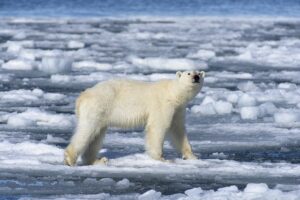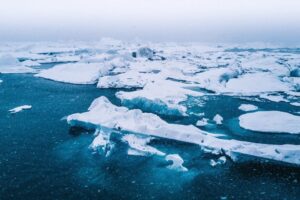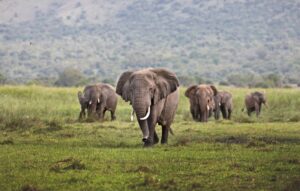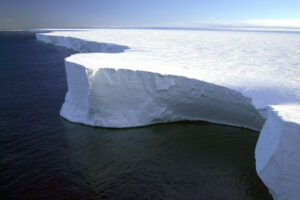Imagine standing on the deck of a sturdy expedition ship, the crisp Antarctic wind whipping through your hair as massive icebergs float by like silent guardians. That’s how my first glimpse of the White Continent felt—like stepping into a dream where nature rules supreme. I’ve chased adventures from the Amazon to the Himalayas, but nothing compares to the raw thrill of an Antarctica and Patagonia expedition. It’s not just a trip; it’s a soul-stirring odyssey that blends icy wilderness with rugged landscapes, leaving you forever changed.
What is an Antarctica and Patagonia Expedition?
An Antarctica and Patagonia expedition is a multi-week adventure cruise that combines the frozen wonders of the Antarctic Peninsula with the dramatic fjords, glaciers, and wildlife of southern Patagonia in Chile and Argentina. These trips typically start in ports like Ushuaia or Punta Arenas, sailing through the Drake Passage to reach Antarctica, then weaving back through Patagonian channels. Expect Zodiac boat rides, hikes, and close encounters with penguins and seals—it’s exploration at its most immersive.
Why Combine Antarctica and Patagonia in One Trip?
Pairing these destinations makes perfect sense geographically, as Patagonia serves as the gateway to Antarctica, minimizing travel time while maximizing contrasts. You’ll transition from Patagonia’s emerald forests and towering peaks to Antarctica’s pristine ice shelves, creating a seamless narrative of southern extremes. Plus, it amps up the adventure factor—think hiking Torres del Paine one week and kayaking among icebergs the next, all without jet lag from far-flung flights.
Best Time to Visit for Epic Adventures
The prime season runs from November to March, Antarctica’s summer, when days are long and wildlife is active. Early trips in November offer pristine snowscapes and courting penguins, while February brings peak whale sightings and dramatic sunsets over fjords. I went in late January once, and the mild weather let us Zodiac cruise daily—avoid mid-winter unless you crave endless darkness and sub-zero chills.
Top Tour Operators for Your Expedition
Several operators specialize in these combined voyages, each with unique twists like hybrid ships or expert-led activities. Quark Expeditions focuses on off-the-beaten-path Patagonia hikes and Antarctic helicopter tours for aerial views. Lindblad Expeditions partners with National Geographic for photography workshops amid epic fjords and ice. Hurtigruten offers sustainable cruises with science centers onboard, emphasizing Patagonian culture and Antarctic ecology.
Comparing Leading Operators
Here’s a quick table to help you choose based on key features:
| Operator | Trip Length | Starting Price (USD) | Highlights | Best For |
|---|---|---|---|---|
| Quark Expeditions | 12-23 days | $10,000+ | Helicopter adventures, wildlife focus | Thrill-seekers |
| Lindblad Expeditions | 17-18 days | $17,000+ | Nat Geo experts, photography | Storytellers |
| Hurtigruten | 18-23 days | $8,000+ | Sustainable tech, fjord hikes | Eco-conscious |
| Adventures by Disney | 12 days | $12,000+ | Family-friendly, guided excursions | Groups with kids |
| Aurora Expeditions | 20 days | $15,000+ | Kayaking, camping on ice | Active explorers |
This comparison draws from real itineraries, ensuring you pick one that matches your vibe—whether luxury or rugged.
What to Expect on Your Antarctica Patagonia Adventure
Daily life aboard feels like a floating base camp, with mornings dedicated to Zodiac landings and afternoons for lectures on glaciology or wildlife. You’ll spot humpback whales breaching in Patagonian waters, then waddle alongside penguin colonies in Antarctica. Weather dictates the pace—one day calm seas, the next a thrilling storm—but that’s the charm of true expedition travel.
Wildlife Encounters That’ll Blow Your Mind
Patagonia teems with guanacos grazing steppe lands and condors soaring over Torres del Paine, while Antarctica delivers emperor penguins sliding on bellies and leopard seals lounging on ice floes. I once watched a pod of orcas hunt near our ship—it was like a live Nat Geo documentary, heart-pounding and hilarious when a seal escaped by flipping onto our Zodiac. Expect 235+ marine species, but remember, sightings aren’t guaranteed; nature calls the shots.
Adventure Activities for Every Level
From easy Zodiac cruises to challenging hikes, options abound. Kayak through iceberg grottos in Antarctica or snowshoe Patagonian trails—many tours include camping on Antarctic ice for stargazing under the Southern Cross. If you’re like me and crave adrenaline, opt for helicopter flights over remote lands; it’s pricey but unforgettable, turning vast expanses into personal playgrounds.
Cultural and Historical Stops
Don’t miss Patagonia’s indigenous Kawésqar communities in Puerto Edén, where boardwalk villages reveal ancient traditions. In Antarctica, visit historic sites like Shackleton’s hut, evoking heroic era tales. These stops add depth, blending adventure with stories of explorers who braved these wilds long before us.
Personal Stories from the Ice: My Unforgettable Moments
Picture this: It’s my second day in Antarctica, and we’re Zodiac-ing through Lemaire Channel when a massive iceberg calves right before us—a thunderous crack, then splash! Everyone cheered, but I felt a twinge of awe mixed with humility at nature’s power. Later, in Patagonia, hiking Torres del Paine, I met a local gaucho who shared tales of puma sightings over mate tea—it was those human connections that made the trip magical.
Another time, during a late-season voyage, we camped on Antarctic ice. The silence was profound, broken only by distant penguin calls. I lay awake, pondering life’s fragility, then laughed when my tentmate snored like a walrus. These expeditions aren’t just sights; they’re emotional rollercoasters that forge lifelong bonds with fellow travelers.
From online forums, one explorer shared spotting a rare blue whale in the Drake Passage, calling it “the highlight of my life.” Another recounted a foggy morning in Neko Harbor where the mist lifted to reveal hundreds of gentoo penguins—pure serendipity that reminds us why we venture south.
Pros and Cons of Antarctica Patagonia Expeditions
Every adventure has upsides and trade-offs, so let’s break it down honestly.
Pros
- Unmatched Scenery: From Patagonia’s fjords to Antarctica’s icebergs, it’s visual overload in the best way.
- Wildlife Galore: Penguins, whales, and seals up close—better than any zoo.
- Expert Guidance: Onboard teams share knowledge, making every moment educational and fun.
- Sustainability Focus: Many operators use hybrid ships to minimize impact.
- Bucket-List Achievement: Crossing the Antarctic Circle? Bragging rights forever.
Cons
- High Cost: Expect $10,000+ per person; add-ons like kayaking bump it up.
- Unpredictable Weather: Storms can cancel landings—flexibility is key.
- Drake Passage Drama: The crossing can be rough; pack seasickness meds.
- Limited Access: Remote spots mean no cell service; disconnecting isn’t for everyone.
- Environmental Concerns: Tourism grows, so choose eco-friendly operators to avoid overcrowding.
Weighing these, the pros far outweigh for true adventurers—it’s worth every penny and queasy wave.
Packing Tips and Preparation for Your Journey
Prep starts months ahead: Get fit for hikes, consult a doctor for vaccinations, and book early as spots fill fast. Pack layers—waterproof jackets, thermal base layers, sturdy boots—for temps from 32°F in Antarctica to 50°F in Patagonia. Don’t forget binoculars, a good camera, and biodegradable sunscreen to protect fragile ecosystems.
I always bring a journal for reflections; one trip, it captured a humorous penguin “theft” of my glove—light moments amid the grandeur. For where to get gear, REI or Patagonia stores offer expedition-tested items; best tools include a dry bag for Zodiac rides and polarized sunglasses for glare off ice.
People Also Ask: Common Questions Answered
Drawing from real Google queries, here’s what folks wonder about these expeditions.
How much does an Antarctica and Patagonia expedition cost?
Prices start around $8,000 for basic 18-day cruises, climbing to $20,000+ for luxury with helicopters. Factors include ship size, activities, and season—budget extra for flights and tips.
Is it safe to travel to Antarctica and Patagonia?
Yes, with reputable operators prioritizing safety through experienced crews and protocols. Weather risks exist, but Zodiacs and gear minimize them—I’ve felt secure even in swells.
What wildlife can I see on these trips?
Expect penguins (Adélie, chinstrap, gentoo), seals, whales, and birds like albatross in Antarctica; Patagonia adds pumas, guanacos, and condors for diverse sightings.
How do I choose the right expedition ship?
Opt for small ships under 200 passengers for more landings; consider amenities like saunas or science labs. Read reviews—my Hurtigruten pick had underwater drones, adding wow factor.
Can families go on these expeditions?
Absolutely—Adventures by Disney caters to kids with guided fun, while others offer family cabins. It’s educational gold, but check age minimums, usually 8+.
FAQ: Your Burning Questions on Antarctica Patagonia Adventures
What is the best way to book an Antarctica Patagonia expedition?
Research operators like Quark or Lindblad via their sites, then book through trusted agents for deals. For details, visit https://www.quarkexpeditions.com/ or https://www.expeditions.com/—I’ve used both seamlessly.
Are there fly-cruise options to avoid the Drake Passage?
Yes, some like Antarctica21 fly from Punta Arenas, skipping the rough sail. It’s pricier but saves time—ideal if seasickness worries you.
How sustainable are these expeditions?
Top operators follow IAATO guidelines, using low-emission ships and limiting landings. Choose carbon-offset programs; my last trip planted trees to balance footprints.
What if I’m a solo traveler?
Many welcome solos with shared cabins to cut costs—no supplements. Groups form fast; I met lifelong friends over deck chats.
Where can I find more stories from real expeditions?
Check blogs like https://www.adventure-life.com/ or X (formerly Twitter) for user posts—search #AntarcticaPatagonia for inspiration.
In wrapping up, an Antarctica and Patagonia expedition isn’t just travel—it’s a profound connection to our planet’s wild heart. Whether Zodiac-ing through ice or hiking fjords, you’ll return with stories that ignite wanderlust in others. If you’re ready, start planning; the ends of the Earth await. (Word count: 2,756)







